Q
Does the Nexis support smart connectivity?
Alright, here's how to fire up your Perodua Axia. First things first, make sure the gearbox is in Park (for automatics) or Neutral (for manuals). Then, press down hard on the brake pedal (if it's an auto) or the clutch pedal (if you're driving a manual). Grab your key, stick it into the ignition, and give it a clockwise turn to the "ON" position. Hold on a sec, let all the dashboard lights do their little self-check dance – once that's done, turn it further to "START" to get the engine going. Once it roars to life, let go of the key.
If you've got the keyless start option, it's even simpler. Just have your smart key with you when you hop in. Step on the brake (auto) or clutch (manual) firmly, then just push the start button – easy as that, the engine's running.
Once you're up and running, it's a good idea to let the engine idle for a bit to settle down, especially if it's cold. This helps protect the engine and can even give you better fuel efficiency in the long run.
The Perodua Axia is all about being economical and user-friendly, so its starting procedure is pretty much like most modern cars out there. But, to keep things running smoothly, don't forget to regularly check your battery's charge and the overall condition of the starting system – there's nothing worse than a flat battery leaving you stranded. And of course, stick to the manufacturer's recommended service schedule. That way, your Axia stays in tip-top shape whenever you need it.
Special Disclaimer: This content is published by users and does not represent the views or position of PCauto.
Related Q&A
Q
Which Segment Does Perodua Nexis Belong to?
The Perodua Nexis falls into the B-Segment SUV category. This vehicle is positioned slightly higher than the Axia and Bezza in Perodua's product line. It mainly targets young family users who pursue space practicality and stylish design. The body size of the Perodua Nexis is expected to be similar to that of the Proton X50, but its price will be more affordable, continuing Perodua's characteristic of high cost - effectiveness.
B - Segment SUVs are very popular in the Malaysian market. Vehicles in this category usually have a relatively high ground clearance and flexible cabin space, which are suitable for the diverse local driving environments, including urban commuting and occasional countryside trips.
The Perodua Nexis is expected to be equipped with an energy - efficient 1.5L Dual VVT - i engine and may come with advanced safety systems such as ASA 3.0, continuing the brand's tradition of emphasizing fuel economy and safety.
For Malaysian consumers, B - Segment SUVs are a popular choice that combines practicality and a sense of trend. With its mature local production and a well - established after - sales service network, Perodua can often provide solutions that better meet local needs.hts.
Q
How much engine displacement of Perodua Nexis?
The Perodua Nexis has not been officially launched yet, so the official has not announced its specific engine displacement (CC) data. However, according to industry speculation, this upcoming B-segment SUV might be equipped with the same 1.0-liter three-cylinder turbocharged engine as the Perodua Ativa. The engine has a displacement of 998cc, a maximum power of 98 horsepower, and a peak torque of 140 N·m, and is paired with a D-CVT gearbox. If the final configuration turns out to be true, this small-displacement turbocharged engine can balance fuel economy and power performance, making it very suitable for the urban road conditions in Malaysia. Meanwhile, Perodua models generally adopt a lightweight design, which further optimizes fuel consumption. It is recommended that consumers keep an eye on the latest news from the official Perodua website or authorized dealers to get accurate information. When making a purchase, Malaysian car owners can also make a horizontal comparison with engines of similar models, such as the 1.5TGDI engine (1477cc) of the Proton X50 or the 1.5L naturally aspirated engine (1498cc) of the Honda HR-V. However, they need to pay attention to the differences in road tax, insurance, and maintenance costs among engines with different displacements.
Q
What Engine is used in Perodua Nexis?
The Perodua Nexis is expected to be equipped with a 1.5-liter Dual VVT-i naturally aspirated engine. This engine shares the technical platform with models like the Perodua Ativa and Toyota Rush. It has a maximum output power of about 106 horsepower and a peak torque of 138 Nm. It is paired with a D-CVT transmission, focusing on fuel economy and smoothness in daily driving. The engine adopts a dual variable valve timing system, which can optimize the intake and exhaust efficiency at both low and high speeds and meets the EURO 4 emission standards in the Malaysian market. For Malaysian users who value practicality, this kind of small-displacement engine can balance the fuel consumption during city commuting and the occasional long-distance needs, and the maintenance cost is relatively low. It's worth mentioning that Perodua has gradually upgraded its power technology in recent years. For example, a more efficient 1.0-liter turbocharged option has been applied to models like the Bezza. In the future, it may also offer a hybrid version for the Nexis to adapt to the market trend, but the specific details shall be subject to the official release. The engine design of this kind of compact SUV usually gives priority to durability in tropical climates. It is recommended that car owners conduct regular maintenance to ensure long-term performance.
Q
What is the Gearbox Type of Perodua Nexis?
As an upcoming all-new SUV model, the official details about the transmission type of the Perodua Nexis haven't been released yet. However, based on Perodua's consistent technical approach and market positioning, it's expected to be equipped with a proven D-CVT continuously variable transmission or a 4-speed automatic transmission. These two types of transmissions have been widely used in Perodua's existing models like the Aruz and Bezza. They are particularly suitable for the urban road conditions in Malaysia, balancing fuel economy and a smooth driving experience.
It's worth noting that the D-CVT transmission offers a more direct power response by simulating gear shifts, while the traditional automatic transmission is known for its durability and low maintenance costs. Consumers can choose according to their own driving habits. If the Nexis is positioned as a youthful SUV, more advanced transmission technologies may be introduced to enhance its competitiveness. It is recommended to follow Perodua's official press conference for the final configuration information.
Malaysian consumers can refer to the actual test - drive experience when making a purchase. The transmission tuning has a significant impact on the daily driving comfort. Meanwhile, the transmissions of all Perodua models have been locally adapted to suit the tropical climate and diverse road conditions.
Q
Does Perodua Nexis Support Apple Carplay?
As a newly launched model, it hasn't been officially confirmed whether the Perodua Nexis is equipped with Apple CarPlay. It is recommended that interested consumers directly contact Perodua dealers or check the official website for the latest configuration information. Apple CarPlay is a very practical in - vehicle connectivity technology. It allows iPhone users to directly use common functions such as navigation, music, and calls through the car's infotainment screen, enhancing driving convenience and safety. In the Malaysian market, more and more new cars are starting to be equipped with this feature, especially models from Japanese and local brands. If the Nexis gets this configuration in the future, its market competitiveness will be greatly enhanced. Apart from Apple CarPlay, Android Auto is also a similar in-vehicle connectivity system, which enables Android phone users to achieve the same convenient operations. For Malaysian consumers who value the technological experience, they can pay more attention to these smart connectivity configurations when buying a new car, as they can significantly improve the daily driving experience.
Q
What is the Tyre Brand of Perodua Nexis?
As the only part of the vehicle that contacts the ground, tires are crucial for driving safety, fuel consumption performance, and noise control. It is recommended that car owners give priority to products that match the original factory specifications (such as size 195/55 R16 or similar parameters) when replacing tires in the future. Also, pay attention to the tread wear indicator lines to ensure safety. If you're after better performance, you can consider upgrading to silent or energy-saving tires after the warranty period. But be aware that modifications may affect the original factory warranty terms, so it's advisable to consult an authorized service center.
In Malaysia's rainy climate, it's particularly important to choose tire treads with strong wet-grip performance. Regularly checking tire pressure and the aging condition of the tires is also basic maintenance knowledge.
Q
Is Perodua Nexis a Good Car? Learn the Pros and Cons Here
As an upcoming all-new SUV model, the currently official information reveals that the Perodua Nexis is positioned as a B-segment urban SUV. It is expected to be powered by a combination of a 1.5L Dual VVT-i engine and a D-CVT gearbox. This market-proven powertrain has advantages in terms of fuel economy and maintenance costs, making it particularly suitable for the urban road conditions in Malaysia and consumers' demand for practicality. Judging from the released teaser images, the Nexis adopts Perodua's latest family design language. The body lines are more sporty. The interior is expected to continue the brand's layout style that emphasizes functionality and may be equipped with an advanced ASA active safety system, which is quite attractive to Malaysian family users who value safety. Although the specific configuration and price have not been announced yet, referring to Perodua's consistent market strategy, the Nexis is likely to follow the high-cost-performance route, competing differently with the Proton X50 and providing consumers with a more affordable SUV option. It is recommended that potential buyers pay attention to the upcoming detailed specifications and take a test drive to experience its space performance and handling feel. At the same time, compare the after-sales warranty policies of models in the same class. After all, a 5-year warranty period has become the mainstream standard in the Malaysian market, and Perodua's nationwide service center network is a remarkable advantage for its after-sales service.
Q
What is the Second Hand Price of Perodua Nexis? Check Used Price Here
Normally, used - car prices are affected by multiple factors such as the vehicle's age, mileage, condition, maintenance records, and market demand. Take other popular Perodua models like the Myvi or Axia as an example. The used - car prices of vehicles with a 1 - 3 - year age are approximately 60% - 80% of the original price, but the specific price depends on the configuration and market supply and demand.
If you're considering buying a used car, it is advisable to check vehicles that have undergone professional inspections through authorized dealers or certified platforms. At the same time, pay attention to checking the Service Book to confirm the maintenance history, and it is recommended to take a test drive to confirm the mechanical condition.
For models about to be launched, you can also refer to the depreciation curves of similar - positioned models of the same brand as a future reference. However, note that the application of new technologies or differences in configurations may cause price fluctuations.
Q
What is the Fuel Consumption of Perodua Nexis?
As an upcoming all-new SUV model, the official fuel consumption data of the Perodua Nexis has not been officially released yet. But referring to Perodua's consistent use of energy-saving technologies such as the DVVT dual variable valve timing system and lightweight body design, it is expected that its fuel economy will continue the brand's advantage, possibly ranging from 5.0 to 6.5 liters per 100 kilometers. The specific performance depends on the actual power configuration (such as a 1.5L naturally aspirated engine or a hybrid system) and driving conditions.
For Malaysian consumers, in the daily use scenarios of urban commuting combined with highway sections, this kind of compact SUV can usually balance power and fuel consumption. It is recommended to pay attention to the actual test data released by the subsequent PUSPAKOM certification or the Energy Efficiency Label (EEV).
It is worth mentioning that fuel consumption is significantly affected by driving habits, road conditions, and maintenance status. Regularly maintaining tire pressure and avoiding rapid acceleration and deceleration can improve fuel efficiency. And the reasonable use of air conditioning in Malaysia's hot climate is also a key factor in optimizing energy consumption.
If you have higher requirements for energy efficiency, you can compare it with models in the same class, such as the 1.5TGDI engine of the Proton X50, or wait for the technical details of Perodua's potential hybrid version.
Q
Is Perodua Nexis Worth Buying? Check out Its Features Here!
The Perodua Nexis, as an upcoming all-new SUV model, is truly worth the attention of Malaysian consumers. It is expected to be equipped with a 1.5L Dual VVT-i engine, paired with a D-CVT transmission, offering a smooth driving experience and good fuel economy, which is suitable for daily commuting and family use. Based on the known information, the Nexis might be equipped with advanced safety systems such as ASA 3.0 (Advanced Safety Assist) and six airbags, which are quite competitive among models in the same class. The interior space is expected to continue Perodua's consistent practicality. The rear seats can be folded down to increase the luggage capacity, meeting the multi - purpose needs of Malaysian families. Although the official has not yet announced the full configuration and price, referring to Perodua's high - cost - performance strategy for previous models like the Ativa and Aruz, the Nexis is very likely to continue this advantage. For consumers with a budget of around 100,000 ringgit who are looking for reliability and practicality, they might as well wait for more official information before making a decision. Given Malaysia's rainy and hot climate, it is recommended that consumers pay extra attention to the vehicle's air - conditioning cooling effect and anti - rust process when buying a car. These details can often enhance the long - term driving experience.
Latest Q&A
Q
Toyota Hiace how many seats
The Toyota Hiace is a staple in Malaysia's commercial and family vehicle scene, with seating options that vary by trim. The standard models, like the Hiace Van, typically offer 12 to 15 seats—perfect for commercial shuttle services or group outings. On the flip side, the more upscale variants such as the Hiace Super Grandia trim down to 9 to 11 seats, prioritizing comfort with premium upholstery and rear air-conditioning, ideal for family trips or business reception. It is worth noting that some aftermarket shops also offer custom seating configurations, such as adjusting to 13 seats or reducing to 8 seats to flexibly adapt to different uses. For Malaysian buyers, the Hiace's biggest draws are its legendary durability, high ground clearance that handles local road conditions like a champ, and wallet-friendly maintenance costs. The diesel engine variants, in particular, stand out for their impressive fuel efficiency. For the most accurate specs, though, your best bet is to hit up a Toyota Malaysia authorized dealer. They can walk you through the latest model year details, including safety features like ABS and dual airbags—stuff that could definitely sway your final purchase call.
Q
How many models does Toyota Hiace have
The Toyota Hiace is a total workhorse and family favorite here in Malaysia, killing it in both commercial and personal use. You’ll mainly find a few go-to variants cruising our roads: the standard Hiace Van, the Hiace Commuter (that’s the people-hauler), and the top-dog Hiace Super Grandia (the luxury liner). These aren’t just badge swaps—they’re built for different jobs. The Hiace Van? It’s all about getting cargo from A to B, no frills, just space. But the Commuter and Super Grandia? They’re where comfort takes the wheel, packing nicer seats, better air-con, and all that extra kit to keep passengers happy.
Under the hood, Toyota’s got you covered with diesel and petrol engine options, so whether you’re after torque for heavy loads or something smoother for daily drives, there’s a Hiace for that. Malaysians swear by this van for a reason—its legendary durability and rock-solid resale value are huge wins. Plus, that cavernous interior and flexible seating? Perfect for everything from running a business to shuttling the whole family (and then some).
If you’re thinking of adding a Hiace to your fleet or driveway, do yourself a favor: figure out what you’ll *really* use it for, then hit up your nearest authorized dealer for a test drive. Trust me, you’ve gotta feel that space and drive to get the full picture.
Q
Mitsubishi Xpander made in which country
The Mitsubishi Xpander is a multi-purpose vehicle (MPV) primarily built in Indonesia, rolling off the lines at Mitsubishi Motors' local plant there. Since its launch back in 2017, this people-mover has struck a chord in Southeast Asian markets – Malaysia included – thanks to its roomy interior and all-around practicality.
The Xpander's design does a neat job balancing the agility needed for city hops with the space requirements of family getaways. Under the hood, you'll find a 1.5-liter MIVEC engine, which delivers smooth power and decent fuel efficiency – perfect for Malaysia's varied road conditions, whether you're navigating city streets or hitting the highway.
What really makes it stand out for Malaysian families, though, are those thoughtful touches: the generous ground clearance that handles those unexpected potholes, and the super flexible seating arrangements that let you juggle passengers and cargo with ease. Being purpose-built for Southeast Asia, the Xpander nails the local adaptations. Think a robust air conditioning system that laughs at our tropical heat, and interior materials that can take the daily grind – little wonder it's a top pick among Malaysian buyers.
If the Xpander has piqued your interest, swing by your nearest Mitsubishi dealership for a test drive. There's no better way to get a feel for how it drives and just how practical it really is.
Q
how many seater is Mitsubishi Xpander
The Mitsubishi Xpander has carved out a solid following in Malaysia's MPV scene, and it's easy to see why. This 7-seater is a hit with families, thanks to its roomy interior and smartly designed, flexible seating. The 2+3+2 layout works well – the second row slides back and forth to free up legroom, while the third row is perfect for kids or adults on shorter trips. Need more cargo space? Just fold those rear seats down, and you've got plenty of room for whatever you're hauling.
Under the hood, there's a 1.5-liter MIVEC naturally aspirated engine, paired with either a 4-speed auto or 5-speed manual gearbox. It's not about speed here; it's about that smooth, easy drive for daily use and keeping fuel costs in check – exactly what family buyers want.
Practical touches don't stop there. You get handy features like a multifunction steering wheel, a touchscreen infotainment system, and a reverse camera, all of which make life behind the wheel that bit easier.
What really makes the Xpander stand out in Malaysia, though, is its whole package. It's priced reasonably, Mitsubishi's known for building reliable cars, and their after-sales network here is pretty extensive. If you're a consumer who prioritizes space and getting good value for your money, this is a solid pick in the practical family MPV segment.
Q
how much is the Mitsubishi Xpander
The Mitsubishi Xpander's pricing in Malaysia varies depending on the trim level and specifications. The entry-level Xpander Standard starts at approximately RM92,890, while the higher-spec Xpander Premium comes in at around RM99,890. Actual prices may fluctuate based on dealer promotions or optional extras selected. This 7-seater MPV has struck a chord with local families thanks to its spacious interior, practicality, and strong value for money. Under the hood, you'll find a 1.5L MIVEC naturally aspirated engine churning out 105PS and 141Nm, paired with a 4-speed automatic transmission. Fuel efficiency is rated at around 6.6L/100km. Convenience features include LED daytime running lights and power-folding side mirrors.
Notably, the Xpander boasts a generous 205mm of ground clearance, making it better suited than your average MPV for those rougher patches of road you might encounter around Malaysia. Its "Dynamic Shield" family face also gives it a distinct and recognizable look on the road. When considering rivals in the same segment, the Toyota Avanza or Honda BR-V might come to mind, but the Xpander holds an edge in terms of third-row space and cargo-carrying versatility. It's always a good idea to head down to an authorized showroom for a test drive to get a real feel for how it handles, and to check out the latest promotions – things like low-interest financing or complimentary service packages could sweeten the deal.
View MoreRelated News
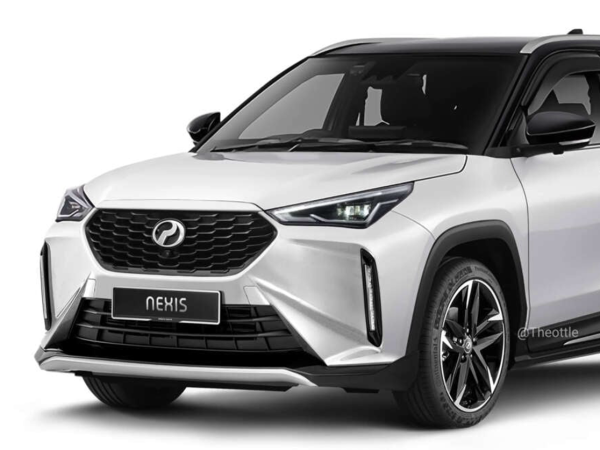
Should I choose Proton X50, or continue waiting for the repeatedly disappointing Perodua Nexis?
JohnNov 22, 2024

Perodua Axia Hits 790,000 Sales: What Makes It So Popular?
AshleyAug 12, 2025
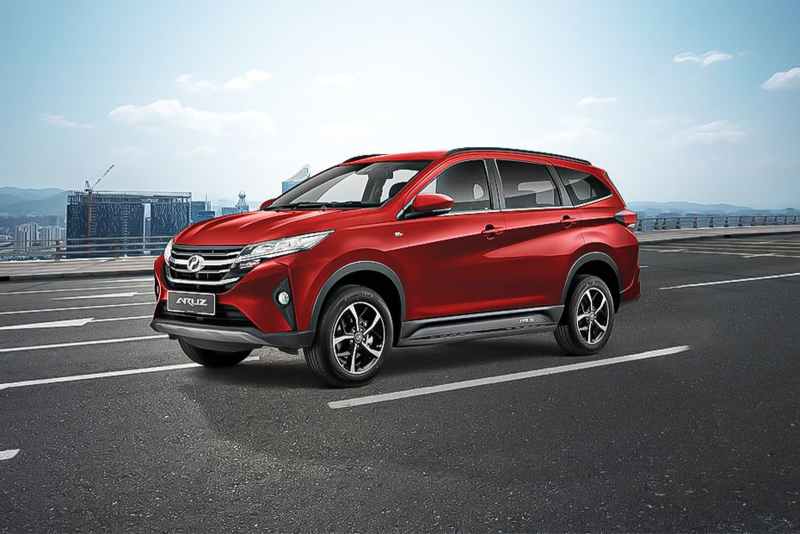
Perodua Aruz Review: A Practical and Safe SUV That Won’t Break the Bank
JamesJul 25, 2025
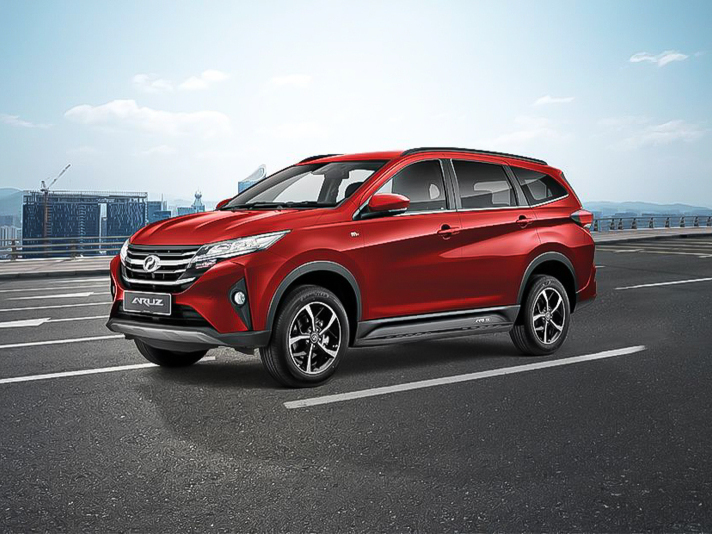
Perodua Aruz Interior Review: A Practical Cabin Despite Basic Materials
JamesJul 23, 2025
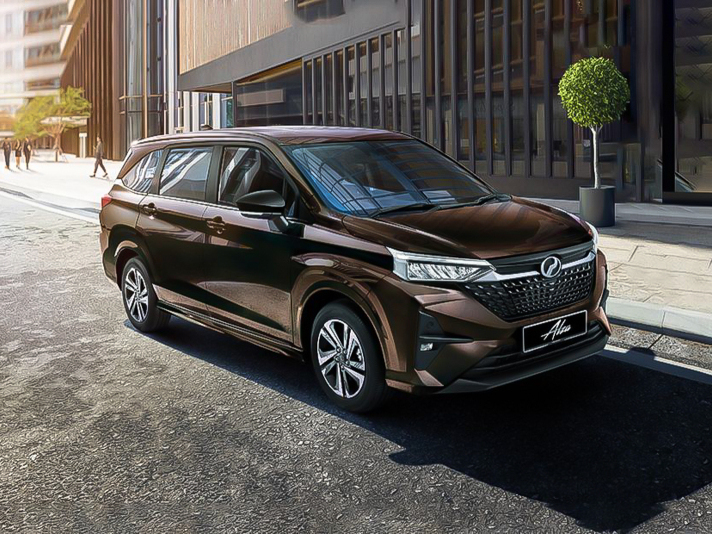
Perodua Alza Interior Design Revealed: Malaysia's Top Choice for Family MPV
AshleyJul 23, 2025
View More












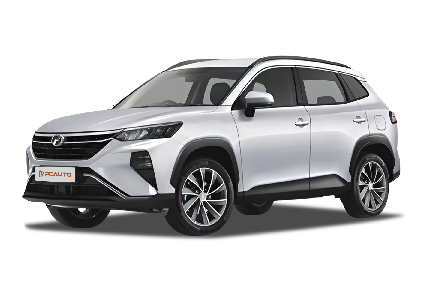





Pros
Cons